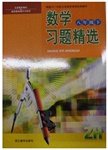题目内容

What brings a nation together? Of the four choices — shared values, language, history, and religion, it’s shared values. In our latest poll (民意调査), seven out of 16 countries chose values as the greatest factor (因素)bringing a nation together, and six preferred language. Both choices scored high in the poll, suggesting that our values and how we express them are closely linked .Still, history was not forgotten in some countries, particularly in Mexico and Russia. Even Canada and the United States chose national histories as the second-most important factor uniting their people. The biggest surprise? Not one country picked religion as its top choice.
| Respect your elders In most countries, the oldest generation considered values more important to a nation than did those who are under 45 years old. | Do you speak Canadian? Language scored lower in Canada than in all other countries polled, perhaps because the country speaks two official languages, French and English. | Church and state Most people polled do not connect their religious beliefs to their national pride. Religion ranked last in 13 countries — with France scoring it at 1%, the lowest of all. |
| A.Language. | B.Values. | C.History. | D.Religion. |
| A.Canada. | B.Mexico. | C.France. | D.America. |
| A.Australia | B.Brazil | C.China | D.India |
【小题1】B
【小题2】A
【小题3】D
解析

 习题精选系列答案
习题精选系列答案We have all experienced days when everything goes wrong.A day may begin well enough,but suddenly everything seems to get out of control.It seems as if a single unimportant event may cause a number of things to happen.Let us suppose that you are preparing a meal and keeping an eye on the baby at the same time.The telephone rings and this means your troubles are beginning.While you are on the phone,the baby pulls the table-cloth off the table,destroying your half-prepared meal.You hang up hurriedly and attend to your baby.Meanwhile,the meal gets burnt.As if this were not enough to bring you to tears,your husband arrives,unexpectedly bringing three guests to dinner.
Things can go wrong on a number of people on the road. During the rush hour one evening two cars hit each other and both drivers began to argue.The woman driver behind the two cars happened to be a learner.She suddenly got into a panic(恐慌)and stopped her car.This made the driver following her stop suddenly.His wife was sitting beside him holding a large cake.As she was thrown forward,the cake went right through the window and landed on the road.Seeing a cake flying through the air,a truck-driver had to stop his truck all of a sudden.The truck was carrying empty beer bottles and hundreds of them slid off the back of the truck on the road.This led to yet another angry argument.Meanwhile,the traffic piled up behind.It took the police nearly an hour to get the traffic on the move again.In the meanwhile,the truck-driver had to sweep up hundreds of broken bottles.Only two dogs were enjoying themselves from the accident,for they were happily having what was left of the cake.It was just one of those days!
【小题1】In the writer’s opinion .
| A.accidents may happen anytime |
| B.troubles always come in groups |
| C.a small matter may cause great trouble |
| D.anyone may have trouble any day |
| A.They helped the driver clean up the road. |
| B.They helped the drivers to go on with their journey. |
| C.They tried to stop the people from arguing. |
| D.They would find out who should be responsible for(有责任的)the accident. |
| A.you’d better have your baby a little distant from your table before going to answer the phone |
| B.you’d better just let it ring all the way |
| C.you should never go to answer it in a hurry |
| D.you should answer it right away |
| A.some drivers are too careless |
| B.such accidents are rather strange |
| C.such accidents are very common |
| D.we don’t know why such accidents happen |